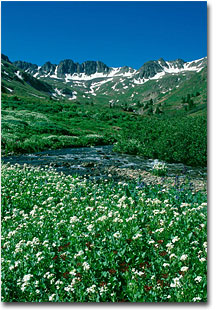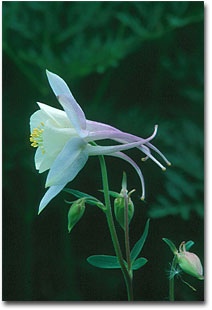|
|

All rights reserved. Each of us has a variety of photo locations available, some nearby and some in other parts the country - or the world. Some of these locations, especially those that are close to home, become well known through repeated visits. Like old friends, these locations are comfortable and predictable. Conversely, other locations are new and relatively unexplored (by us) and hold the promise of new discoveries. Each type of location offers advantages and challenges. Let's take a brief look at the pros and cons of photography in "new" places. The Pros
The Cons

As an example, my wife and I recently visited the American Basin in Colorado's San Juan Mountains for the first time. Planning our trip was a task that required learning about access roads and researching conditions and subjects. Although the timing of the trip was fixed by circumstances at my "day job," the other aspects of the trip required decisions and planning. For several weeks, much of our spare time was spent anticipating broad vistas of snow-capped mountains with masses of colorful spring wildflowers in the foreground. Since we had never visited this location before, we weren't certain the flowers would be at their peak, although we were pretty sure the mountains would be there. Travel times and road conditions, best times of day and optimal shooting angles were also unknowns, so we needed to be prepared for whatever we found at the scene. Unfortunately, the timing for this trip was not optimal and we were there about two weeks before the plants reached their peak condition. There were lots of flowers, but not the masses of blooms we were expecting. Of course the mountains were there, looking majestic in their springtime cloak of leftover snow. After spending some time
Although the trip did not exactly match our expectations, it was still quite successful. Now we know what time of year to visit (mid to late July), what time of day is best (early morning), the best lighting angles, where to stay, which roads to take and how long it takes to drive there. Most of all, we learned which equipment and techniques we will need for future visits. Base on this newfound knowledge, American Basin is now one of our new favorites. Once a location has proven to be productive, it just makes sense to visit there again and again. This allows us to learn more about the location, finding backgrounds and niches that were not apparent on the first visit. Repeated visits can also teach us when the light is best, when the subjects are most active, and when they are in the best condition. There is a lot to be said for shooting at the same location again and again. On the other hand, we all need to try new places and new subjects every now and then, so we can continue to grow and learn. Quite possibly, a new location could develop into one of our often-visited favorites. After all, none of us would have even one favorite location if we hadn't tried a new place at least once. So expand your list of shooting locations, without eliminating your old favorites, and watch what happens to your results. Good shooting! MB-NPN 045 Comments on this article? Send them to the editor. |
|
|
 scouting and selecting the best views available, we made the most of what the new location had to offer. We spent two hours shooting scenics that emphasized the flowers that were already blooming in the clear, morning stillness (before dozens of other visitors arrived by jeep, SUV and all-terrain vehicle). Once those shots were finished, we turned our attention to shooting individual blossoms, getting re-acquainted with macro techniques that we hadn't used in several months.
scouting and selecting the best views available, we made the most of what the new location had to offer. We spent two hours shooting scenics that emphasized the flowers that were already blooming in the clear, morning stillness (before dozens of other visitors arrived by jeep, SUV and all-terrain vehicle). Once those shots were finished, we turned our attention to shooting individual blossoms, getting re-acquainted with macro techniques that we hadn't used in several months.